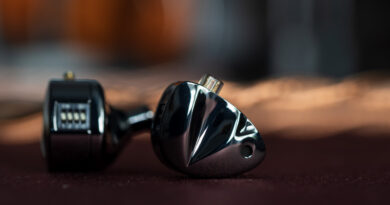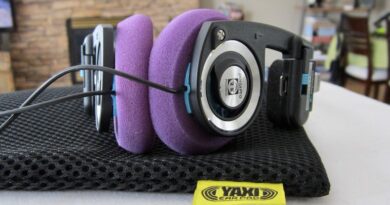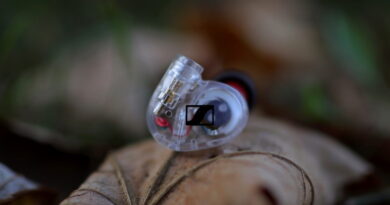RHA CL2 Review – Hands Down The Best Planar Yet
I never fell in love with the planar timbre, neither in the end I did this time. It’s just not precisely my cup of tea. Yet this time it was a much closer call, really. What I heard is no doubt a full class above any other chifi planar I auditioned to date.
This piece is to report my experience with a glorious piece of old world technology, Scottish RHA’s CL2 planar IEMs. A privately owned sample was sent to me by an audiophile friend for assessment, and I now understand his love and jealousy for the item indeed.
Currently discontinued, these IEMs were marketed for around €900 back in their day (some 2-3 years ago).
In this Article
At-a-glance Card
| PROs | CONs |
| Unreal elasticity vs PEQ tuning, can freely customise presentation without inducing distortion | Flawed default tuning, PEQ strictly required |
| Clear and clean timbre | Significant current amplification required |
| Beyond good imaging, separation and layering | Planar timbre – although modest – limitates applicative perimeter |
| Addictively impressive and magically unfatiguing detail retrieval |
Full Device Card
Test setup
Apogee Groove+Burson FUN / E1DA 9038SG3-3000 – final E clear eartips – lossless 16-24/44.1-192 FLAC tracks.
Signature analysis
Tonality
RHA CL2’s tuning as it comes out of the box is – simply put – just flawed. Based on a somewhat wide-v general shape, highmid frequencies (2-4Khz) are ununderstandably over excited which inevitably stirs the presentation into a bad sort of shout party. Sub-bass could also do with some more body physicality, but that’s minor in comparison. Highmids, as is, are just undefendable.
That’s bad, but that’s at least as bad as it gets. The great news instead is that RHA’s driver’s elasticity vs even important equalization corrections is close to divine. Using an ordinary PEQ you can push and pull frequencies as you please and CL2 will follow you pretty much into the tonality you exactly want.
The general timbre is that of a (high end) planar driver, so clear, defined and neat, therefore don’t expect what you can’t possibly get, e.g. DD-style attack in the bass, but within that you are free to think to CL2 as a blackboard to draw the tonality curve you prefer on, and that will be nibly delivered.
For my taste fast drivers (like planars) strictly relate to acoustic music like bebop or classical, and that’s why I shaped a sort of mild Vshape, with elevated high mids within the classical DF boundaries on one end, leaving the existing midbass where they are. More on this here below.
Sub-Bass
Sub bass is extended but less prominent than midbass. Especially for acoustic jazz application, a nudge up is really beneficial to standup bass and similar key instruments. A low shelf of +2 / +3dB is recommended.
Mid Bass
CL2 midbass is just great within its planar category. It has pretty much everything you can dream of: speed, definition, texture, detail retrieval – with the sole important limitation of gutt-felt attack which is of course technologically offlimits. Forget any distortion, barred of course that coming from your source so – beware! – CL2 are totally unforgiving on that. Use a clean source, or be ready to hear how dirty your source is. Musically speaking don’t feed them with Pink Floyd, just don’t. Feed them with Andrew Cyrille.
Mids
As previously mentioned, the first thing to do here is removing that elephant from the room: high mids need to be tamed down. I’m putting -3dB around 2.5/3Khz and another -4dB around 4Khz. Then we can talk: mids are now clear, defined, engaging, very detailed and somewhat lean.
Vocals
Vocals are a bit lighter than organic, both male and female although in slightly different ways. An (optional) way to add a bit more body to lower mids vocals in particular is by adding a +3dB high shelf hinged at around 7/800Hz. In such case of course the previous negative bell values at 3 and 4Khz need to be negatively increased by the same quantity. Don’t take notes here, I’ll add an EQ suggestions recap at the end
Highs
CL2’s trebles are very good, sparkly, detailed, while making sure to stay on unoffensive territory. Even too much. Too much christiandemocrat, if the term makes sense to you. Beyond sonic preference, this is another example where CL’s agility vs equalization offers you an experimentation liberty that’s simply missing elsewhere: go head, adventure into pumping air trebles and last octave up … until you like or can bear. Just push: CL2 will follow, no distortion.
Equalization Recs recap
| Required | Bell 2700hz -3dB Q:2.67 Bell 4000hz -4dB Q:3.61 | To remove high-mids shoutfest |
| Highly recommended | Low Shelf 70hz +4dB Q:0.9 | To improve sub-bass impact |
| Recommended | High Shelf 800hz +3dB Q:0.32 if applied, then the highmids correction becomes Bell 2700hz -6dB Q:2.67 Bell 4000hz -7dB Q:3.61 | To improve lowmids and vocal body |
| Optional | Bell 180hz -1.5dB Q:0.82 | To make midbass even punchier |
| Optional | High Shelf 6200hz [+6dB] Q:0.9 or [+3dB] in case the lowmids correction is in place | Play with the +dB value to find your ideal airness |
Technicalities
Soundstage
CL2 offer very good space sizing both accross and in depth. Not the “most huge” room I heard yet in line with expectation on this price level, and vis-a-vis the other high quality technicalities on the product.
Imaging
Macrodynamics are very good, instrument placement is correctly executed in all occasions and casting on the stage comes accross as credible an fully natural
Details
Detail retrieval on highmids and trebles is finely granular and inoffensive / unfatiguing at the same time – an extremely difficult and therefore rare balance to achieve per my experience. Very good detail extraction also happens from mids and bass, with the sole already mentioned caveat regarding planar timbre necessarily keeping bass just a shiff south of truly organic, which also impacts on the realism of their details of course.
Instrument separation
Separation and layering are beyond beautiful; precision and definition are really outstanding and fully worth the price tag and much beyond.
Driveability
CL2 are extremely demanding in terms of amplification. They require a “high minimum” in terms of current delivery, and furtherly positively scale with the amp’s qualities. Amongst the multiple and diverse sources I have available in the end only desktop gear gave CL2 some serious glory, with the sole notable exception of E1DA’s 9038SG3 and 9039D. Pretty much everything else I have at hand right now doesn’t “open” them up appropriately due to scarse current delivery.
CL2 also easily pick hiss up from the source (in my case: Burson Fun), while on the other hand they prove quite resilient to FR skewage even when the amp pair offers a sub-idel damping factor (again for my case: Burson Fun).
Physicals
Build
Ceramic shells following the classical RHA shape are at the same time solid, resistant and – for my taste – greatly stylish to look at
Fit
CL2 fit rather well into my outer ears, although they tend to stay not perfectly still especially vs mandibular movements.
Comfort
Comfort is ok once fitted. The shape is not 100% ideal to me, but its rounded surface helps minimising pain points and such. Above average anyway.
Isolation
Passive isolation is rather average.
Cable
The privately owned unit I borrowed came with a third party cable so can’t comment on stock one(s).
Specifications (declared)
| Housing | Injection moulded ceramic |
| Driver(s) | 10mm planar magnetic driver in a zirconium dioxide chamber |
| Connector | MMCX |
| Cable | n/a |
| Sensitivity | 89 dB/mW |
| Impedance | 15 Ω |
| Frequency Range | 16 Hz – 45.000 Hz |
| Package & accessories | n/a |
| MSRP at this post time | Discontinued (was: € 899,00) |
Comparisons
7Hz Timeless
An unfair comparison looking at price tags: €200 for this chifi thingie, €900 for the scottish one – the latter better be really good ! Dual unfair insofar as per my previous piece on Timeless I don’t find those particularly brilliant even in their own price class. I’m mentioning them mainly due to their recent hype.
Similarly to CL2, ootb Timeless presentation also comes accross as flawed: a major distortion point at 9300Hz introduces a nigh-ridiculous, very invasive artificial tint to the timbre, which must be eliminated or the product is just unaudible, to me at least. Timeless also can benefit of some further sub-bass elevation, again like CL2 does. End of the similarities.
Timeless’ driver is very obviously less refined than CL2’s (heck! at 1/4th the price…) and this results in a much more pronounced, and unpleasant, “inevitably planar” timbre in the first place, and a dramatic lack of texture and detail in the bass line which is dull, uninspiring.
Timeless’ highmids are less shouty than CL2’s out of the box, but they still need EQ correction. No problem, if not for the fact that when downtamed Timeless’s high mids become dull, while CL2’s stay fully vivid, and extremely pleasant.
Even more importantly than all that precedes, Timeless’ technicalities are a joke compared to CL2’s: instrument separation is underwhelming at the very least on Timeless (even vs some non-planars by the way), microdynamics and detail retrieval are nothing more than average un the highs, inexistant from the bass, and soundstage depth is MIA (as in: Missing in Action), whereas CL2 ticks all those boxes with great competence, with a sole sub-top remark reserved to microdynamics which could be even better weren’t for the superfast driver nature of course.
Campfire Andromeda [2020]
Based on a totally different driver setup (5 x BA vs 1 x Planar) comparing Andromeda with CL2 is significant on 2 counts: their sonic presentation (speed, detail, timbre) and their prices categories (€900 vs €1100) are close enough.
You may read my take in detail on my earlier piece about Andromeda [2020], here let me go straight to the point: beyond their differences, Andromeda and CL2 share an almost magically spot-on balance between detail retrieval and control, resulting in smoothness all accross the board.
Neither are my exact cup if tea in terms of timbre: both is too fast, too technical for me. Of the two, CL2’s planar timbre is less pronounced than the (in itself decently moderately at the very least) Andromeda’s BA. What’s totally stunning on Andromeda, and even more so when directly compared to a single-driver product like CL2, is their tonal and timbral coherence across the entire spectrum, and the 5 different drivers working under the hood.
Conversely, and correspondingly, CL2’s single driver needs not pay any toll to the 5 (say: five) different drivers employed inside Andromeda in terms of bilateral extension, articulation, detail retrieval.
Both on my scoreboard excel on the same macro points: the already mentioned resolution/smoothness balance and timbre cleanness and clarity line up in both cases with superb treble delivery, and beyond good imaging, separation and layering. Again, both show their limits on bass texturing and microdynamics in general – which is of course inherent to the very nature of the driver technology of choice in either case.
Andromeda are much less elastic to heavy eq compare to CL2, on the other hand they require much less as their presentation is way more than viable already out of the box. They require much less “power” to be driven, but not a much “cheaper” source anyway: dealing with their very high sensitivity and very low impedance without turning into hiss or distortion in general is not easy.
Considerations & conclusions
RHA CL2 are just spectacular IEMs and they would still be worth every single cent of their price tag if they hadn’t been discontinued as a part of RHA’s disengagement from the higher segments of the audio market. The sole possibility is now finding a good preloved unit.
They deliver an incredibly refined clear and lifelike presentation – a mixture that’s as desireable as rare to effectively find. They can (and must) be freely equalised to have their tonality shaped precisely as per the user taste, and deliver a nothing short of stunning level of technicalities.
Sincere thanks to Simone Fil for the loan and assessment opportunity.







